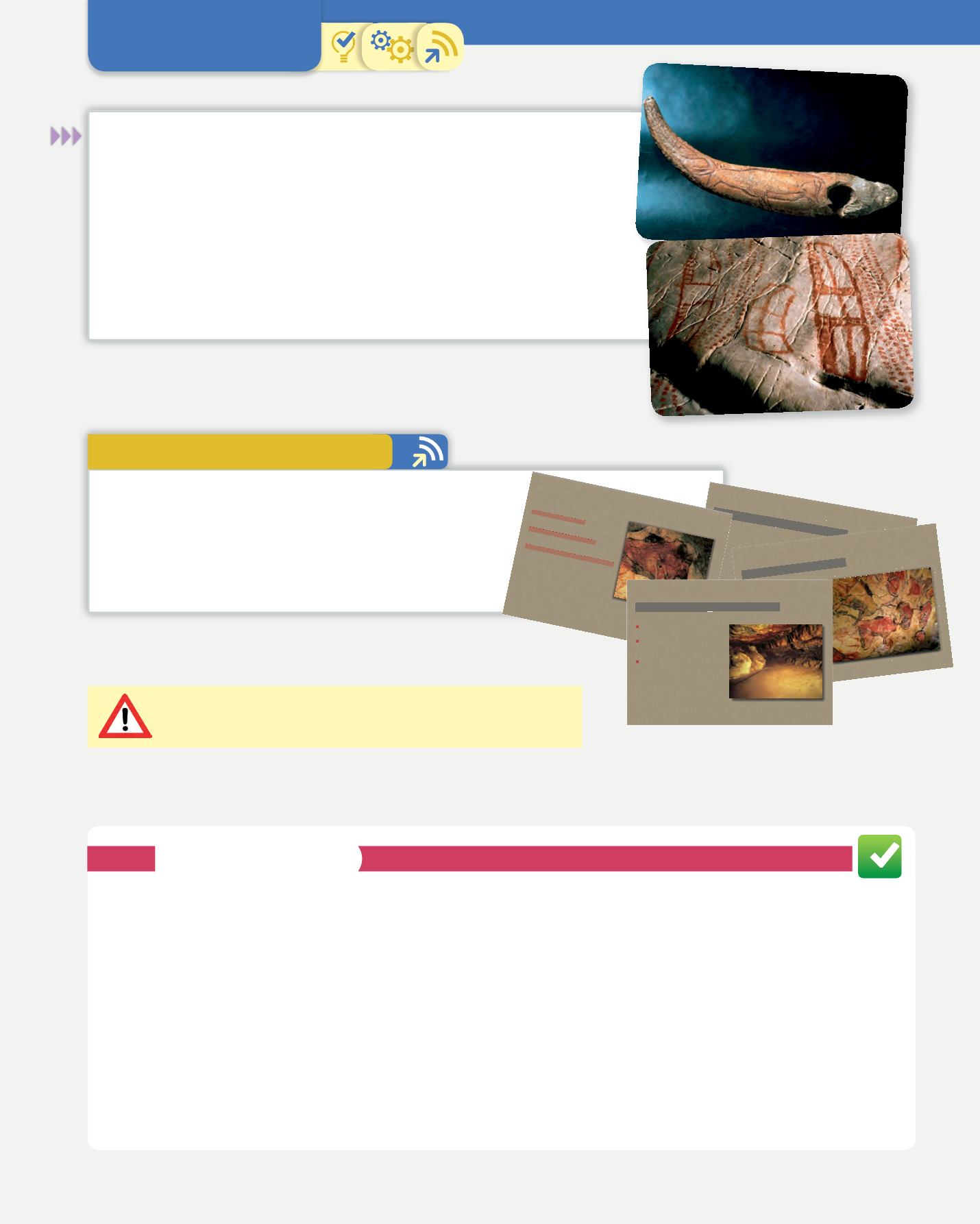
1. Prehistory: the Paleolithic age
25
Prepare a presentation to show the results of your research
and the conclusions you reached about the prehistoric place
you chose. Use text, images, video and audio.
Afterwards, you can post it on your class blog. Include a
class timeline showing all your findings in chronological
order.
Communication and publication
3. General conclusions
❚
From your analysis of the paintings, deduce how the people who painted
them lived.
❚
Why were the inhabitants of the Paleolithic Period obsessed with
animals? Did they like them? Were they ecologically-minded? Were they
superstitious? Why did they need them?
❚
Why did these people feel the need to represent their way of life?
❚
We come from the same species of animal as the Paleolithic painters. How
are we similar to them and different from them?
Final task
1. Prehistory: the Paleolith c Period
1.
Explain this statement: ‘We can only understand the present through our knowledge of the past’.
2.
Why are the remains of the past preserved and exhibited in museums?
3.
How do you think a person from prehistory would feel in the present? How would you behave if you
suddenly found yourself living in the Paleolithic Period? Describe each situation.
4.
Make a list of the characteristics that we share with primitive human beings and enable us to understand
them and their concerns.
5.
Which paintings from prehistoric art did you like most? What aspects of them impressed you most?
6.
Which groups do you think did the best detective work? Why?
7.
What did you learn from the work of the other groups?
8.
What role does new technology play in helping us discover distant places and past eras?
If you want, you can make a timeline online with
Dipity
:
Baton of command (top) and
geometric patterns (bottom)
found in the Tito Bustillo
Cave, Asturias
The cave is situated near
the town of Santillana del
Mar, Cantabria.
It is located in a hillside
about 120 m from the river
Sajo, overlooking the
surrounding area.
SITUATION AND SETTING (l)
SITUATION AND SETTING (l)
SITUATION AND SETTING (l)
ART IN ALTAMIRA (III)
ART IN ALTAMIRA (III)
Los animales más
representados son el
bisonte, el caballo y el
ciervo.
Son pinturas
policromas, de una
enorme calidad y
detalle.
Para su elaboración se
utilizaron pigmentos de
diferentes clases.
ALTAMIRA.
MAGNIFICENT
PALEAOLITHIC ART
ALTAMIRA.
ALTAMIRA.
MAGNIFICANT
MAGNIFICANT
PALEAOLITHIC ART
PALEAOLITHIC ART
DESCRIPTION OF THE CAVE (ll)
DESCRIPTION OF THE CAVE (ll)
The cave is 270 metres
long.
It has 10 chambers where
the cave paintings are
found.
The most famous paintings
are the polychrome
chamber, the tectiforms
chamber, the chamber of
the Hoya and the
Cola de
Caballo
passage.
SELF ASSESSMENT


